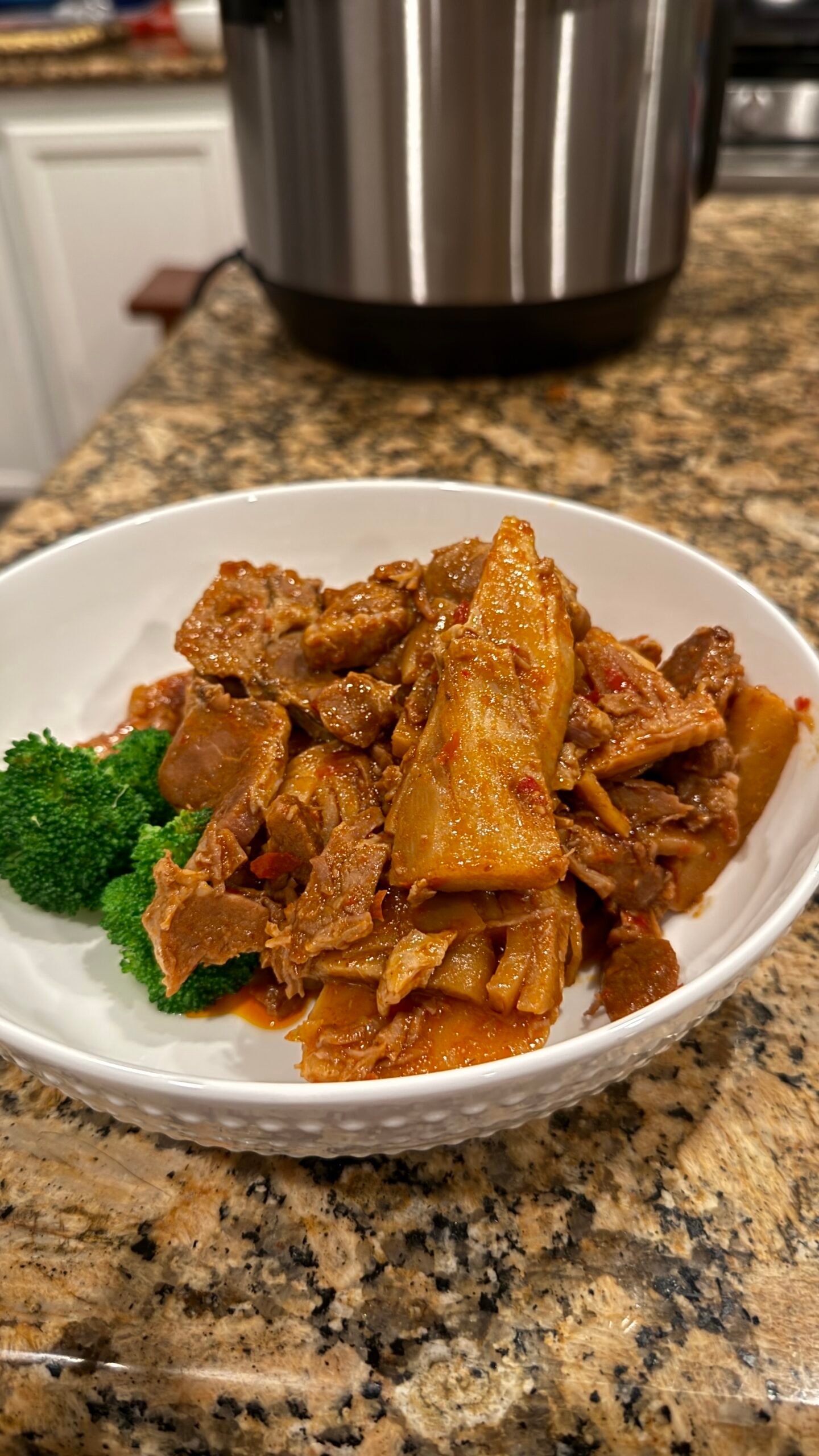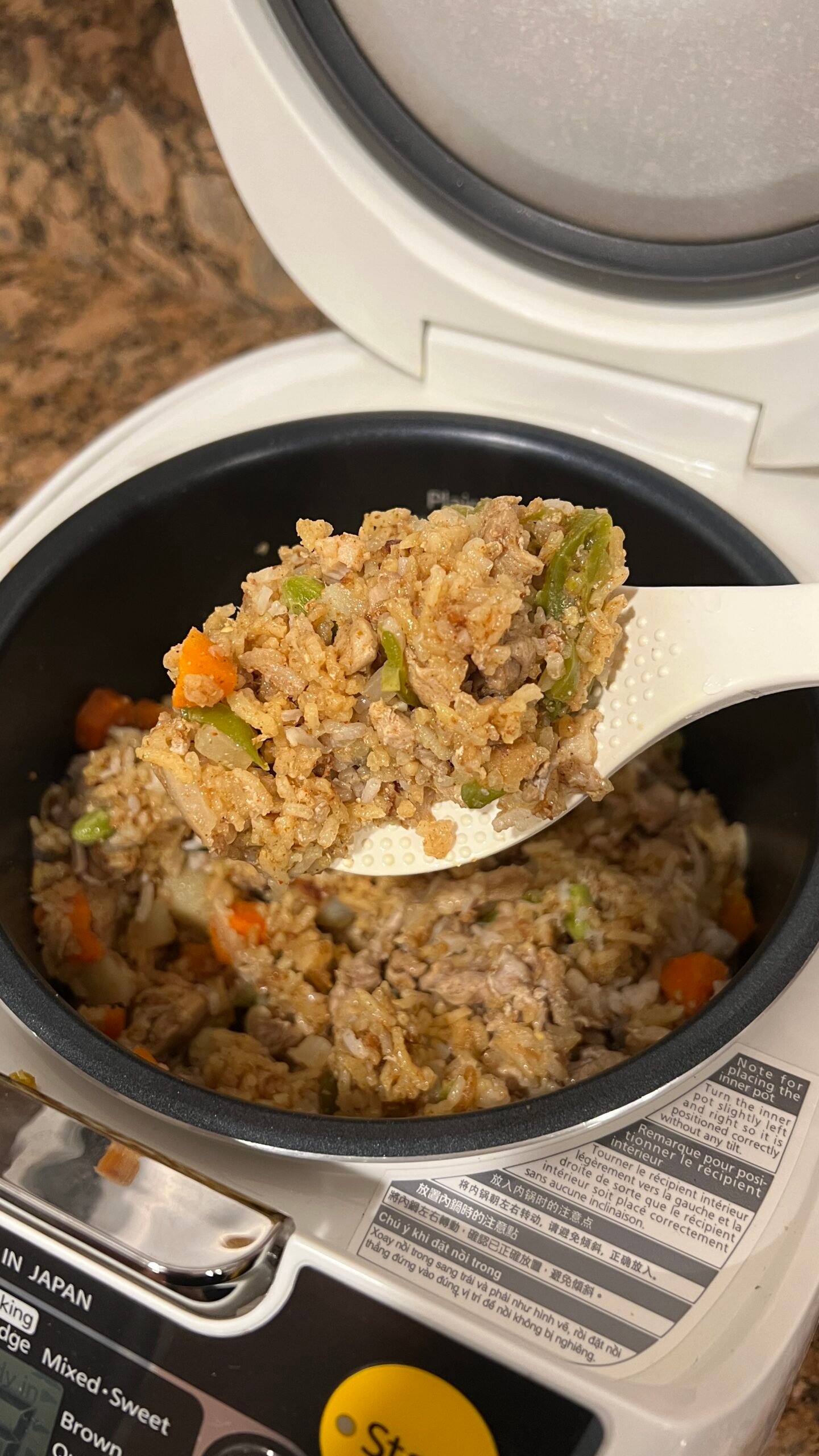Tangzhong (Chinese:湯種), aka water roux, is the secret to soft and pillowy bread! It is basically water (and/or milk) and flour cooked to a thick pudding-like paste and then cooled down to room temperature. Then it is added to the flour mix when kneading the dough and it is so easy to make. I didn’t learn about it until I got serious about bread making and man I wish I had done this way earlier!

How does Tangzhong work?
When heated and cooled, the starch molecules in the flour go through a process called pre-gelatinization, which makes them absorb more liquid than they would at room temperature. As a result, using Tangzhong in any bread recipe may:
- make the dough less sticky and easier to knead
- rise higher than regular dough
- make the bread or rolls moister, softer, and stay fresh longer
How do we make TangZhong?
The perfect ratio for Tangzhong is 5 parts liquid to 1 part flour. I prefer to use a mixture of half milk and half water, but you can do it with all water or all milk.

I add the flour into a small saucepan, then add half the amount of liquid and I whisk it to mix the flour well until there are no lumps. Next, I add the rest of the liquid and stir until well combined. I cook the mixture until I get a nice, thick pudding-like roux.
Since I make my bread pretty often, I like to make a big batch and store it in the fridge for later. Just make sure to bring the tangzhong back to room temperature before using it.

One of my favorite breads to make with Tangzhong is Japanese milk bread! It is soft, sweet, slightly chewy, and addicting! Perfect as a slice of toast or sandwich bread.
Ingredients
Tang Zhong:
Ratio: 5 parts liquid to 1 part flour
- ¼ cup water
- ¼ cup milk
- 2 tbsps bread flour
Milk Bread:
- Tangzhong room temperature
- ½ cup milk, lukewarm
- 1 package of active dry yeast (~7g)
- ¼ cup sugar
- 2 tbsp dry milk powder
- 1 egg
- 2 ⅔ cups bread flour, spoon and leveled
- 1 tsp sea salt
- 4 tbsp / ½ stick unsalted butter, softened
Step-by-Step Guide
Tang Zhong:
- Place the water in a small saucepan. Add the bread flour and whisk until you have a smooth mix with no lumps. Add the rest of the milk and whisk to combine.

2. Heat over medium heat while whisking constantly until the mixture thickens. The resulting mixture should have a thick, pudding-like consistency.

3. Scrape the mixture into a bowl and then cover with plastic wrap. Make sure the plastic wrap is touching the surface of the tangzhong to prevent skin from forming on top.
- Allow the tangzhong to cool to room temperature.

Japanese Milk Bread Loaf:
- Dissolve 1 tsp of sugar in lukewarm milk, sprinkle yeast over the milk, and stir gently to mix. Allow the milk + yeast mixture to stand for about 10 – 20 minutes until the yeast is activated. The mixture should become bubbly and frothy on the surface.

2. Once the yeast is activated, add the milk powder (if using), the rest of the sugar, tangzhong, the egg, flour, and finally the salt. Mix the dough to combine the ingredients and to help form a scraggly dough.

3. Switch to the dough hook attachment and knead the dough for about 5 minutes on a low speed (speed 2 or 3). The dough will be very sticky and stick to the sides, but continue mixing and the dough will start to come together.

4. After 5 minutes of kneading, add the butter in 3 – 4 additions. Once all the butter is incorporated into the dough, turn up the speed to 4 – 5 (medium speed) and knead for a further 5 – 7 minutes. Scrape the bowl once or twice while kneading.

5. Place the dough on a lightly floured surface and shape the dough into a ball. Then place the dough back in the mixing bowl and cover with plastic wrap.

6. Keep the bowl in a warm place and allow the dough to double in size (about 1 – 2 hours, depending on the weather/ambient room temperature).

7. Once the dough is proofed and you’re ready to shape the dough, prepare the loaf pan. Butter 1 – 4.5 x 8.5 inch loaf pan and dust the pan with flour.

8. Turn the dough out onto a lightly floured surface and press all the excess air out of the dough. Weigh the dough, and divide it into 4 equal portions.

9. Roll out each dough portion into a six-inch (approximately) square.

10. Fold the opposite corners of the square towards the middle.

11. Roll up this piece of dough, starting from the pointed end. Make sure you roll up the dough firmly, and a little tightly. Once you’ve rolled up the dough to the top, fold the pointed edge in and pinch the seam to seal.

12. Place the rolled-up dough in the dough pan, seam side down. There will be 4 rolls per loaf pan.

13. Cover the loaf pan with plastic wrap and let the dough proof in a warm place, until doubled in size. This can take about 1 – 2 hours depending on the ambient room temperature. The dough should rise to just below the top of the loaf pan.

14. Preheat oven to 350°F / 180°C. Bake the bread in the preheated oven for 30 – 35 minutes until the internal temperature is about 190 °F

15. Remove the loaf pan from the oven and let it cool for a few minutes turn the dough out onto a wire rack and let it cool down. This bread is easier to slice when at room temperature, but can be enjoyed warm too.




